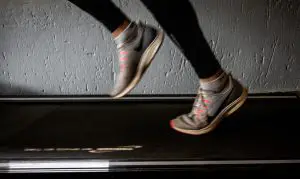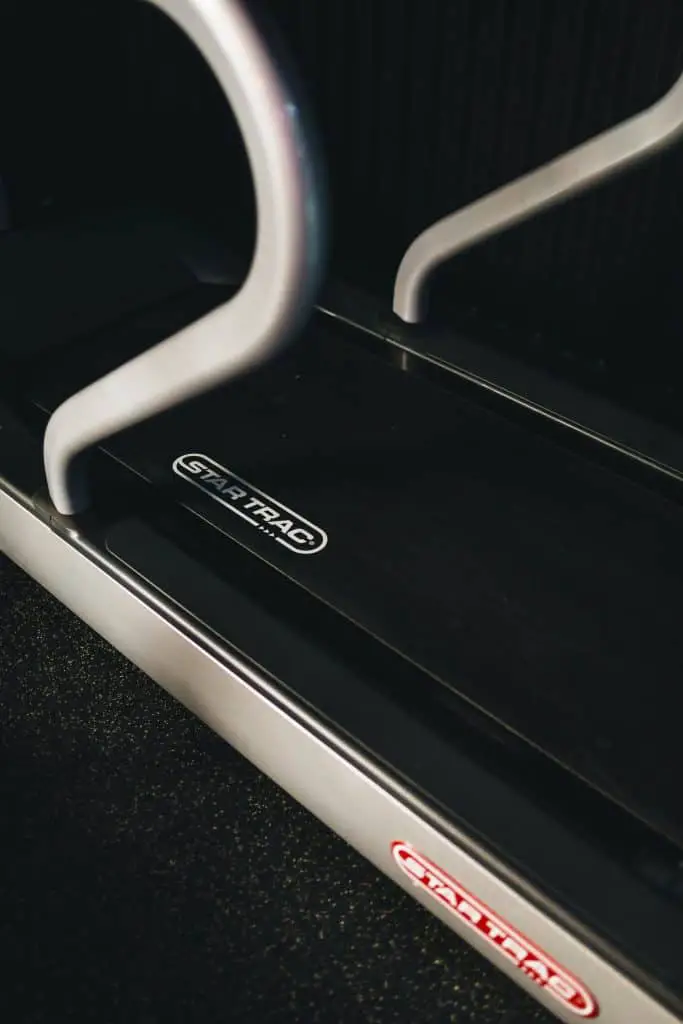
A jog down the walkway in your manufactured home community is never enough. Having a treadmill in your mobile home can supplement the jog or even remove it entirely. Treadmills can be effective and convenient, in some situations, compared to outdoor exercises. They are also better than, say, doing jacks and squats on the bare mobile home’s floor. You definitely need a treadmill.
But, can you really put a treadmill in a manufactured home? To test if you can, tell your kids to run around in the house. Now stand still and feel their movements. Does the house vibrate? So, the answer to the question of whether you can install a treadmill in a mobile home is a big YES if the floor and the general structure of your home are sturdy enough; a NO if you can feel the vibration when your kids run in the family room (but, of course, you can make some adjusts to cut the vibrations).
Safety, Noise, & Damage
Unless your home is old (made before 1978), the floor should be able to support the weight of any normal household appliances, even hordes of them.
Modern mobile homes come with 3/4″ or sometimes 5/8″ floor decking on 2X6 floor joists.
Even the oldest mobile homes made in the early 1970s have a minimum design load of about 40 lbs/sq. ft. and a minimum of 200 lbs. concentrated load on a 1″ diameter disc (check HUD Code Sec. 3280.305).
You can safely have an AVERAGE of 40 lbs. of live weight per square foot.
An average treadmill can weigh about 450 lbs.
The floor of a modern mobile home can comfortably hold a minimum of 1,500 lbs. of heavy household gear like piano and treadmills.
However, these capabilities are sometimes hampered by things like rotting of the floor and the natural aging of the structure of the home.
Three Factors To Consider When Shopping For A Treadmill
You need to consider these factors when adding a treadmill in your mobile home:
1. Weight (People + Treadmill)
The extra live weight you will have in the same room with the treadmill. If you install a 450 lbs. treadmill, for instance, and have another 1 or 2 people nearby exercising as well, the 40 lbs. live weight supported by the floor will be surpassed and an incidence could occur.
2. The Floor
The condition of the floor is a factor to consider as well. If the floor is prone to moisture encroachment, you should rethink the idea of adding a treadmill on it
3. The number of other items in the room
Your floor will be compromised if every 1” diameter disc is forced to support weight way above 200 lbs, say, 300 lbs. or even higher. That means you should reduce the number of items in your gym.
Consequences
If you don’t consider the above factors, this will happen:
Unbearable noise
Now that you installed the treadmill on a weak floor, the produced vibrations will be amplified to adjacent rooms.
Crumbling floor
The weight of a considerably heavy treadmill and accompanying workout items will take a toll on the floor
How To Install A Treadmill In Your Manufactured Home – Proper Gym Setup
Because of the delicate nature of the floor and, to some extent, the general structure of your manufactured home, you can avoid incidences by setting up your gym area in a way that reduces the likelihood of those incidences.
Begin by preparing the floor to support your treadmills with the following 3 steps;
1. Remove the carpet and all the paddings.
Tiles can be heavy and may crack under the equipment. It is good to leave the wooden floor as is or supplement it with more plywood.
2. Lay down a thick layer of 3/4″ quality plywood.
Plywood is good at distributing the weight over a large area. It will distribute the weight of your treadmills and protect the floorboards from damage.
3. Proceed to lay down a thick layer of 8mm rubber flooring.
This is meant to absorb the vibrations from the treadmill.
I’d recommend IncStores’ Strong Rubber Tiles (23in x 23in Tiles/Multi-Piece Floor Kits) Interlocking Rubber Gym Mats for Home Gym Flooring.
This rubber anti-vibration mat will absorb vibrations and sound just as perfectly as most high-end options you will find on the market.
I will recommend more products later.
Follow These Commandments, Or Else….
Now that you have prepared your floor to install a treadmill, there are some important rules to observe just to keep incidences further on the bay.
- If there are some heavy items that must go along with your treadmill, items such as hand lifts and weights, consider stacking them against the wall. The floor area close to the walls of your mobile home is stronger than that in the middle of the room.
- Figure out the direction the floor joists run. Then ensure that your heavy treadmill or any other accompanying heavy equipment span multiple joists.
- While you’re at it, remember the closer you get your treadmill to the end of the joist, the better of you will be. If your treadmill is considerably heavy and you make the mistake of placing it close to the center of your joists, there will be a risk of sagging.
4. Install vibration insulators
Let’s say your floor is flawless and can comfortably support the weight of the heaviest treadmills you could lay your hands, but the general structure of your mobile home was not designed to absorb intensive vibrations from inside. Consider these vibration control measures:
a. Underlayments
Underlayments are installed below finished floors to cut the spread of impact noise to the rest of the house. This could mean you are reinstalling your floor to accommodate them. These products below are better than installing neoprene or rubber under your floor.
You might want to install your treadmill on this underlayment.
It is one of the best sound insulation and mechanical vibration underpayments for the plywood floors found in some mobile homes. The best part is that it is compatible with most finishes you’d add on your floor.
It weighs just 120 lbs. and covers 60 sq. ft. of floor space.
Acousti-Mat® Floor Underlayment
This is yet another noise and impact insulation underlayment made for wood and concrete walls and steel decks. With this mat, you can establish a gym anywhere, even on the deck.
It also comes with the Acousti-Mat® Perimeter Isolation Strip that isolates around the edges of the wall and protrusions on the floor to minimize the likelihood of leaking the mechanical vibrations to the rest of the house.
It is capable of covering about 360 sq. ft. Floor space (it is sold in multiple dimensions)
b. Vibration dampers
Vibration dampers, as their name suggests, “dampens” the vibration instead of isolating or absorbing it. Absorbers such as rubber simply take the energy into their amorphous structure.
Isolators function by keeping the frequency of the vibration below the corresponding excitation frequency hence preventing the actual vibration to occur.
Dampers, however, takes the energy out of the vibrating surface.
VibStop® Vibration Damping Sheet
It is a self-sticking sheet of rubber that removes the need of making radical changes on your floor to cut on mechanical vibration emanating from the treadmill. You can install it directly on the surface of the floor and then install the treadmill on top. These sheets are lightweight and you don’t need special tools in installation.
c. Anti-vibration pads
Anti-vibration pads are the cheapest way of reducing the vibration of treadmills. You simply attach them to the legs or base of the treadmill before it touches the floor. It is possible to find a decent quad of vibration pads on Amazon at $40 on Amazon – there is a whole lot of them here.
5. Lightweight, less vibration treadmills
You can be better off with a lightweight treadmill that isn’t prone to vibration. Such a treadmill will remove the need for floor adjustment or purchase of vibration absorbers and dampers.
The XTERRA Fitness® TR150 Folding Treadmill Black is a compact lightweight treadmill that can be installed on some the most delicate surfaces out there.
It can also be folded easily and stored away after a workout.
Final thoughts
Can you install a treadmill in a manufactured home? Yes, but it depends. The condition of the floor and the general sturdiness of the structure can influence the decision. The moist or old-style floor is unsuitable for supporting a heavy more modern treadmill.
And if the general structure of the home can’t stand sustained vibrations, your workout will be felt throughout the house.
You will have to make some upgrades on your floor before creating a gym. A full-blown floor replacement can be better but only when you have the resources for the project.
Whichever material you choose to use on for the floor, ensure that it is capable of distributing the weight of the treadmill and the accompanying gym equipment (and aquarium, etc) evenly across a large area to prevent the development of weak points on the floor.
If the floor is perfect but there is still a significant risk of sending vibrations all over the household, consider investing in a vibration insulator.

